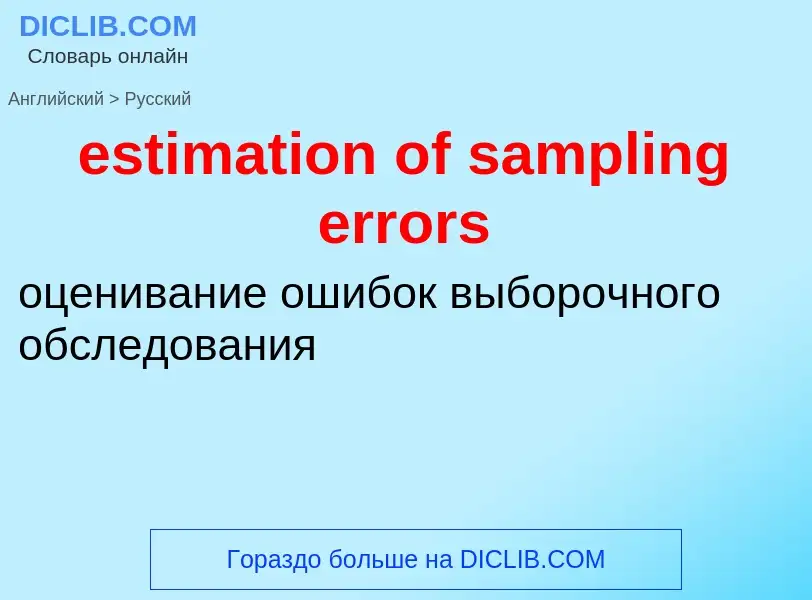Перевод и анализ слов искусственным интеллектом ChatGPT
На этой странице Вы можете получить подробный анализ слова или словосочетания, произведенный с помощью лучшей на сегодняшний день технологии искусственного интеллекта:
- как употребляется слово
- частота употребления
- используется оно чаще в устной или письменной речи
- варианты перевода слова
- примеры употребления (несколько фраз с переводом)
- этимология
estimation of sampling errors - перевод на русский
статистика
оценивание ошибок выборочного обследования
общая лексика
теорема отсчетов
медицина
избыточное разгибание
переразгибание
чрезмерное растяжение
2) чрезмерное кредитование
3) бирж. покупка ценных бумаг или товаров на слишком большую сумму
4) см. over-expansion 2
математика
розыгрыш
общая лексика
выборочное обследование
Определение
.
Википедия
Estimation of distribution algorithms (EDAs), sometimes called probabilistic model-building genetic algorithms (PMBGAs), are stochastic optimization methods that guide the search for the optimum by building and sampling explicit probabilistic models of promising candidate solutions. Optimization is viewed as a series of incremental updates of a probabilistic model, starting with the model encoding an uninformative prior over admissible solutions and ending with the model that generates only the global optima.
EDAs belong to the class of evolutionary algorithms. The main difference between EDAs and most conventional evolutionary algorithms is that evolutionary algorithms generate new candidate solutions using an implicit distribution defined by one or more variation operators, whereas EDAs use an explicit probability distribution encoded by a Bayesian network, a multivariate normal distribution, or another model class. Similarly as other evolutionary algorithms, EDAs can be used to solve optimization problems defined over a number of representations from vectors to LISP style S expressions, and the quality of candidate solutions is often evaluated using one or more objective functions.
The general procedure of an EDA is outlined in the following:
t := 0
initialize model M(0) to represent uniform distribution over admissible solutions
while (termination criteria not met) do
P := generate N>0 candidate solutions by sampling M(t)
F := evaluate all candidate solutions in P
M(t + 1) := adjust_model(P, F, M(t))
t := t + 1
Using explicit probabilistic models in optimization allowed EDAs to feasibly solve optimization problems that were notoriously difficult for most conventional evolutionary algorithms and traditional optimization techniques, such as problems with high levels of epistasis. Nonetheless, the advantage of EDAs is also that these algorithms provide an optimization practitioner with a series of probabilistic models that reveal a lot of information about the problem being solved. This information can in turn be used to design problem-specific neighborhood operators for local search, to bias future runs of EDAs on a similar problem, or to create an efficient computational model of the problem.
For example, if the population is represented by bit strings of length 4, the EDA can represent the population of promising solution using a single vector of four probabilities (p1, p2, p3, p4) where each component of p defines the probability of that position being a 1. Using this probability vector it is possible to create an arbitrary number of candidate solutions.



![Subsampled image showing a [[Moiré pattern]] Subsampled image showing a [[Moiré pattern]]](https://commons.wikimedia.org/wiki/Special:FilePath/Moire pattern of bricks small.jpg?width=200)


